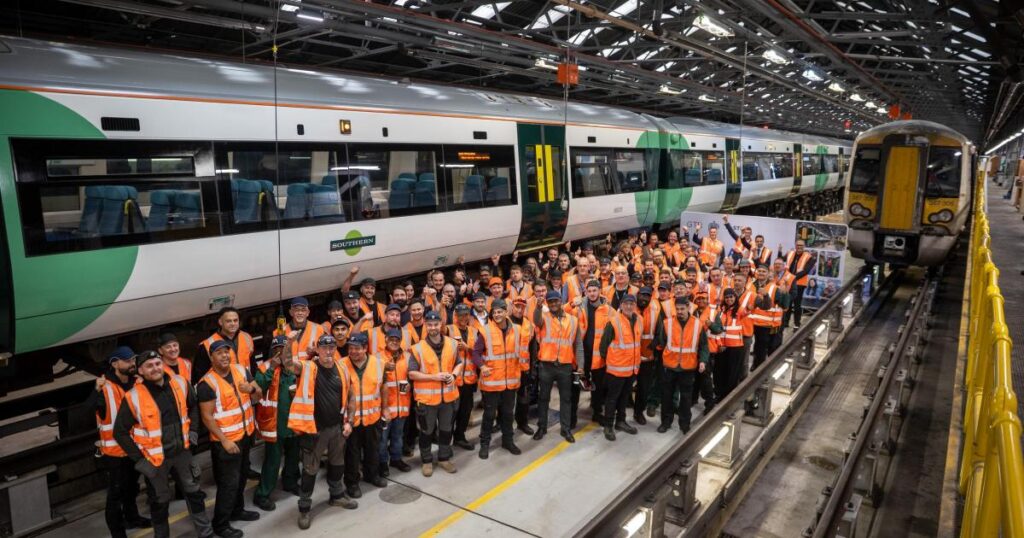The task, which took five years, was the biggest train improvement project in the UK and saw Southern, Gatwick Express, Great Northern, and Southeastern trains enhanced.
The last train is due to be back in service this weekend.

The upgrade project, named Project Aurora, was tackled by a team of Southern engineers at the Selhurst depot in south London.
They fitted the carriages with plug sockets, information screens, LED lights, improved WiFi, and a new digital system that speeds up repairs, thus keeping the trains in service for longer periods.
Steve Lammin, GTR’s engineering director, said: “The success of this modernisation scheme has resulted in wide-ranging benefits to passengers on some of the country’s busiest routes, and I’d like to thank everyone whose dedication contributed to this.
“A project of this scale to be completed in-house by Southern engineers is a really impressive feat and has been key to the speed we’ve managed to get upgraded trains out and serving customers again.”

The project was funded by Porterbrook, a rolling stock company that backs and manages assets.
It was expanded midway through its term and became one of the largest fleet upgrades, with 1,222 carriages completed in time for the 200th anniversary of the birth of the modern railway.
John Whitehurst, GTR’s chief operating officer, added: “This project is a great example of what can be achieved through true industry collaboration to deliver meaningful benefits for passengers and the wider network.”
The upgraded trains serve customers in London, Sussex, Surrey, Hampshire, and Kent.
At the peak of the project, two trains were fully upgraded and returned to passenger service each week.
The project involved:
– 280 km of wiring
– 39,000 LED lighting tubes
– 36,000 power sockets (each with two USB sockets)
– 2.8 million fixings and fastenings
The trains now feature three-pin plug and dual USB sockets at every seat, enhanced passenger information screens with new digital displays at the end of each carriage, energy-saving LED lighting, and new tech to count the number of passengers on a train.
This data will be used to improve timetables and services.
New smart onboard data recorders and updates to the Train Data Network now allow for better remote monitoring of the train’s operational systems, which helps in reliability and reduces the time trains spend out of service for maintenance or repair as engineers can diagnose faults before the train’s arrival.
In addition, forward-facing and track debris CCTV has been installed on every train.
This has the ability to remotely live stream and download images which aid in incident analysis and reducing future delays.
Ben Ackroyd, chief operating officer at Porterbrook, acknowledged the team’s relentless effort.
He said: “This has always been about making sure that we provide passengers with the best quality trains that we can, and we’re confident that they will see the benefits of these extensive upgrades.”
Alstom, the UK’s leading supplier of new trains and train services, provided the technical specification, design work, and materials for Project Aurora.
Steve Harvey, Alstom’s Services Director UK and Ireland, said: “Aurora marks a landmark achievement for UK rail, and I’m immensely proud of Alstom’s pivotal role in delivering this transformation.
“Completing the country’s largest fleet upgrade on time and on budget is a true testament to the dedication and expertise of our teams.”
Project Aurora was recognised at the National Rail Awards in 2023, winning the Fleet Achievement of the Year award for its efficiency.
GTR operates the UK’s biggest fleet of Electrostars, running between London, Surrey, Sussex, and the south coast.
The trains also run on the Great Northern and Gatwick Express routes and with Southeastern in Kent.




